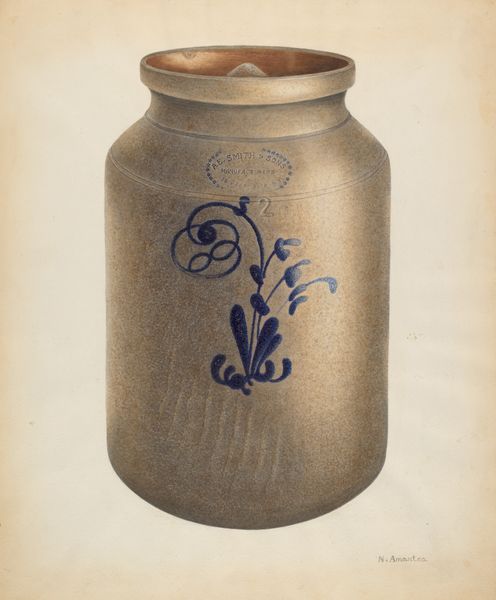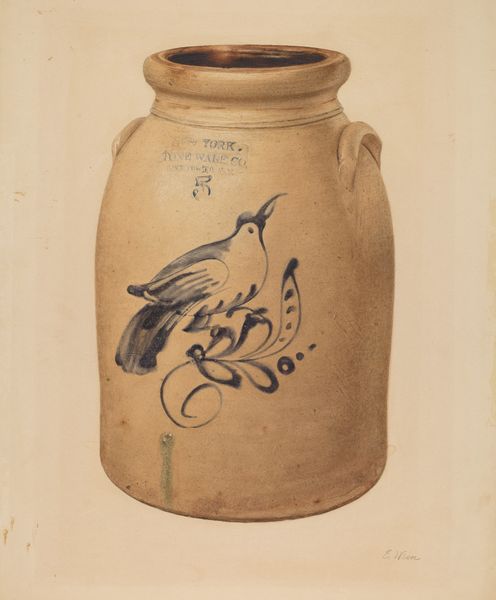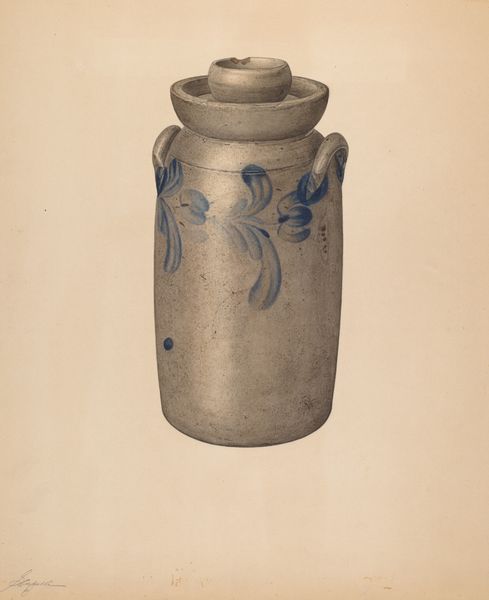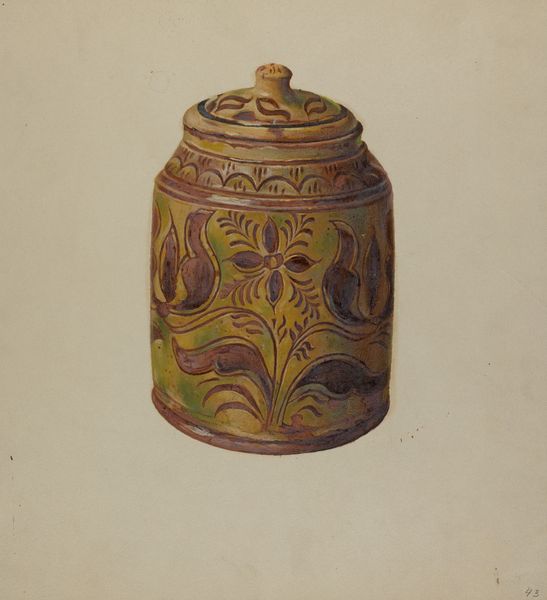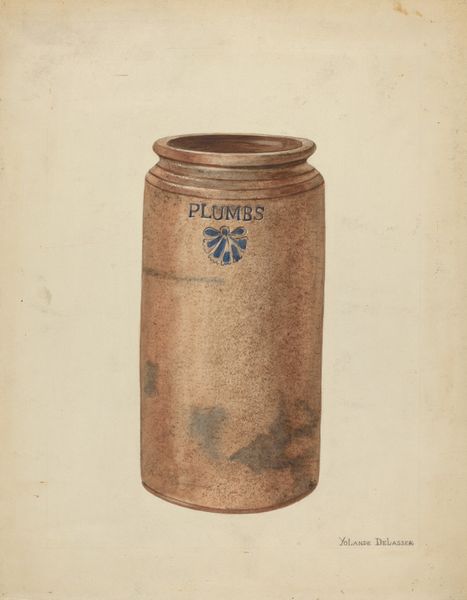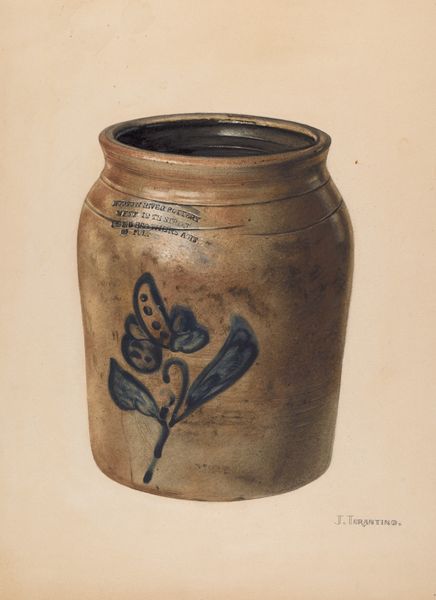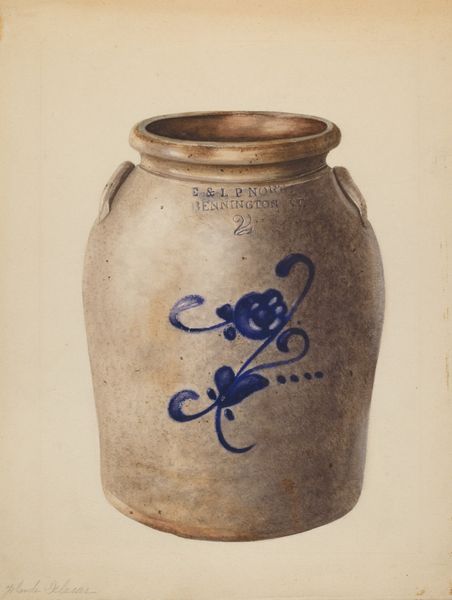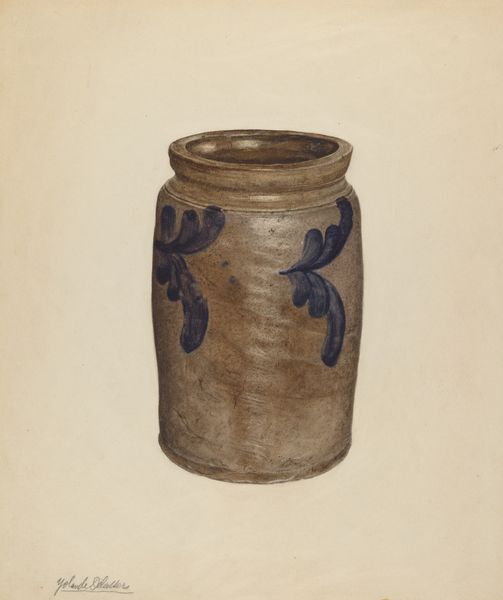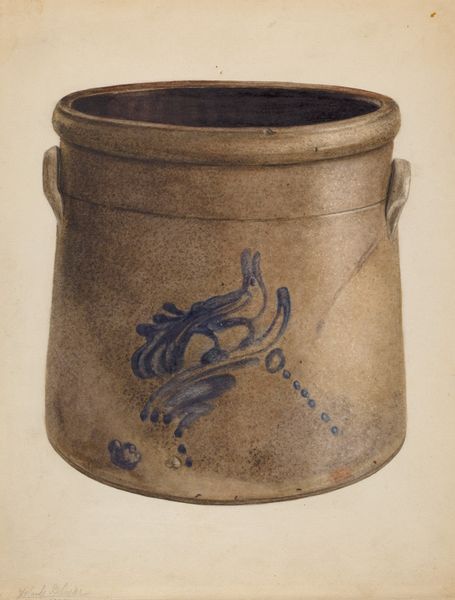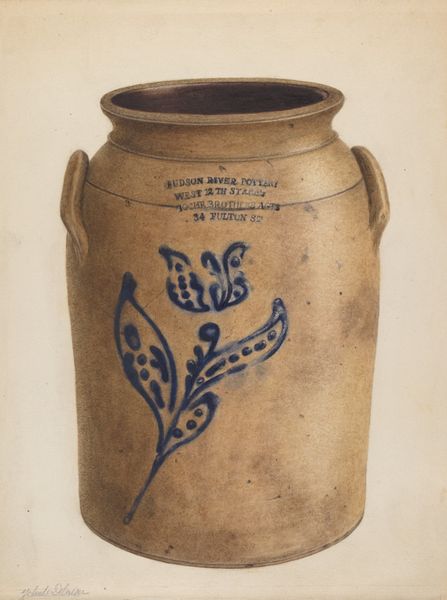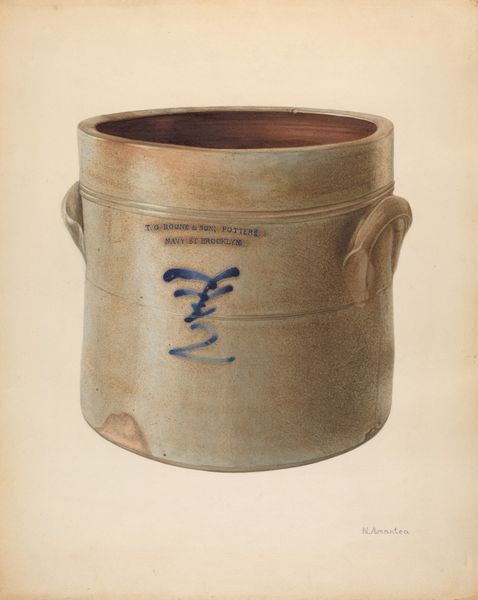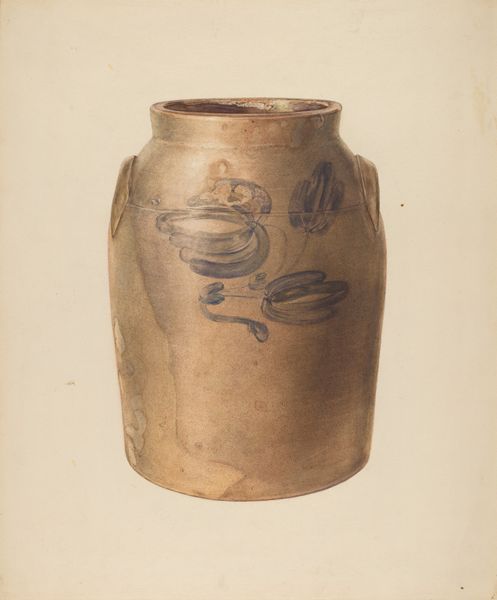
drawing, ceramic, watercolor
#
drawing
#
water colours
#
pottery
#
ceramic
#
watercolor
#
coloured pencil
Dimensions: overall: 40.6 x 30.5 cm (16 x 12 in.) Original IAD Object: 8 3/4" High 8 3/4" Dia(base) 8 1/2" Dia(top)
Copyright: National Gallery of Art: CC0 1.0
Curator: We're looking at "Crock with Cover," created around 1938 by Yolande Delasser. It's rendered in watercolor and colored pencil, depicting, unsurprisingly, a ceramic crock. Editor: It’s immediately homey, isn’t it? Functional but lovingly depicted. The palette is so restrained, focusing on earthen tones, with those expressive blue flourishes. Curator: Absolutely. Delasser’s work invites us to consider the interplay between the utilitarian object and its artistic representation. This specific piece would likely have been manufactured at the E. Fowler pottery in New Lebanon, NY— we can tell by the inscription. We must also think about where and how such utilitarian vessels were employed for domestic activities, and for food production, distribution and storage. Editor: You know, New Lebanon was a hotbed of Shaker craftsmanship, known for their high standards. I wonder about the Shakers' influence here, considering the object's purpose and the region’s values around craft. This type of drawing suggests a dialogue within early 20th-century design—one showcasing utility elevated through aesthetic design. I wonder who commissioned Delasser to create the illustration? Or was it done in the interest of a larger arts awareness and educational program to record American craftsmanship during a time of industrial change and modernisation? Curator: Exactly. It speaks to broader anxieties and celebrates local artisanal labor practices in the face of increasing industrialisation. What stories would this particular crock hold, if we could trace its history and material journey from manufacture and the design printed onto its side to home use. Editor: Precisely! Beyond just function, we might even ask how ceramics factored into community celebrations, everyday dining, even rituals. And how it, as an object, shaped identities during this time? Curator: This particular image speaks volumes about the culture of that period. It challenges that traditional division between high art and functional craft. Editor: I agree. A final reflection here about seeing what at first glance looks to be a rather mundane thing, yet in essence captures entire systems of social organization in this country at a certain historical juncture. Curator: Indeed. This rendering captures how a common object connects us to the economic, social and artistic histories of the region.
Comments
No comments
Be the first to comment and join the conversation on the ultimate creative platform.

